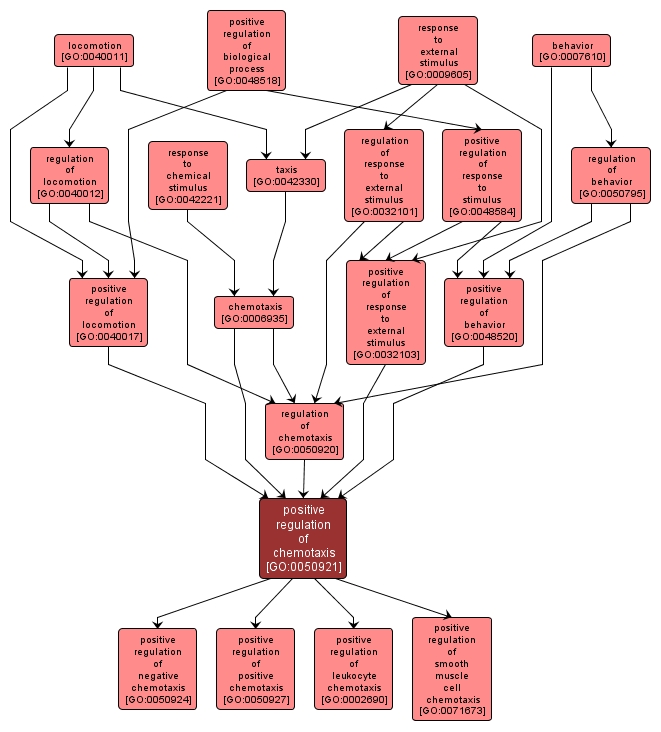GO TERM SUMMARY
|
| Name: |
positive regulation of chemotaxis |
| Acc: |
GO:0050921 |
| Aspect: |
Biological Process |
| Desc: |
Any process that activates or increases the frequency, rate or extent of the directed movement of a motile cell or organism in response to a specific chemical concentration gradient. |
Synonyms:
- activation of chemotaxis
- up regulation of chemotaxis
- upregulation of chemotaxis
- up-regulation of chemotaxis
- stimulation of chemotaxis
|
|

|
INTERACTIVE GO GRAPH
|














